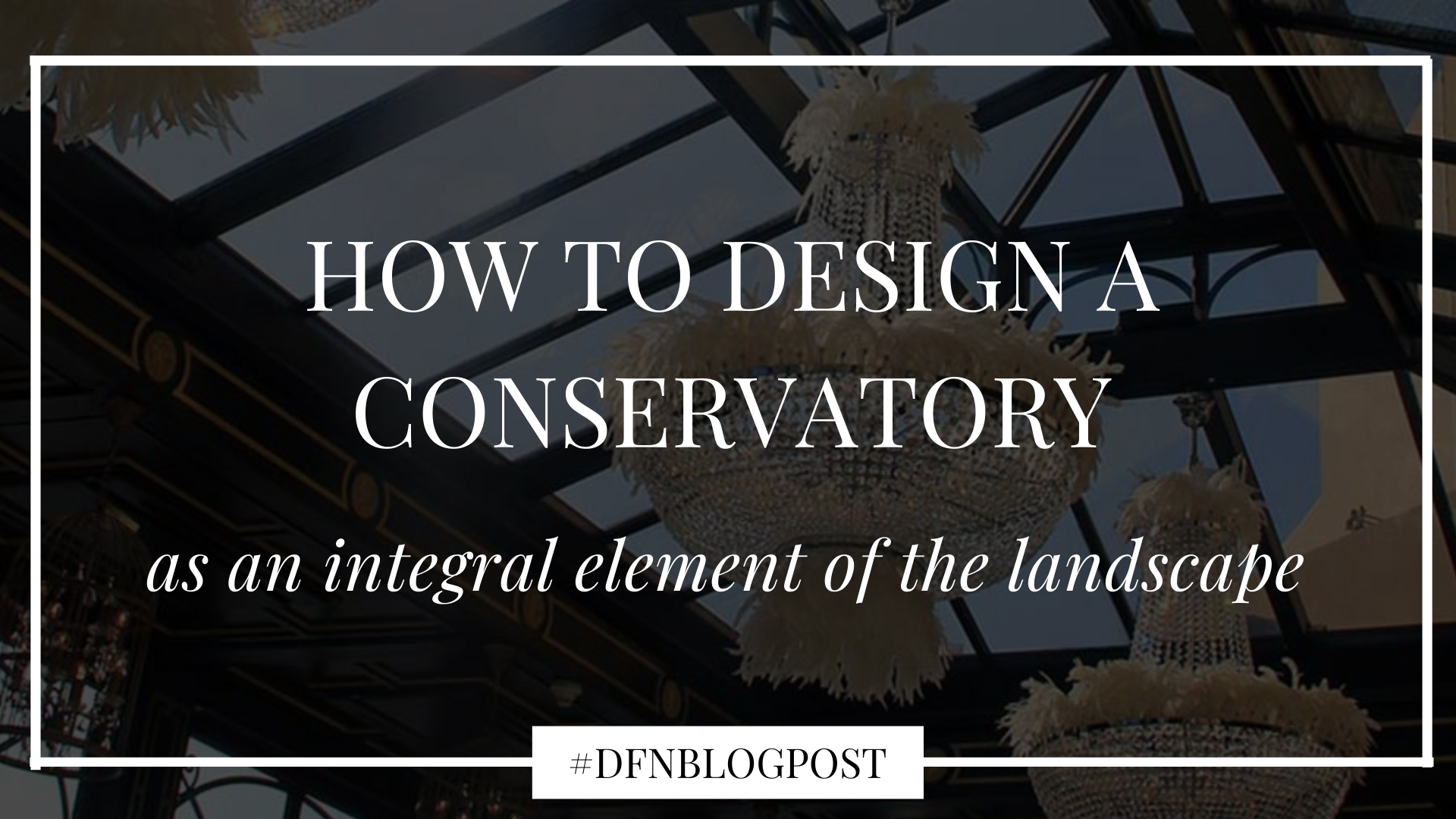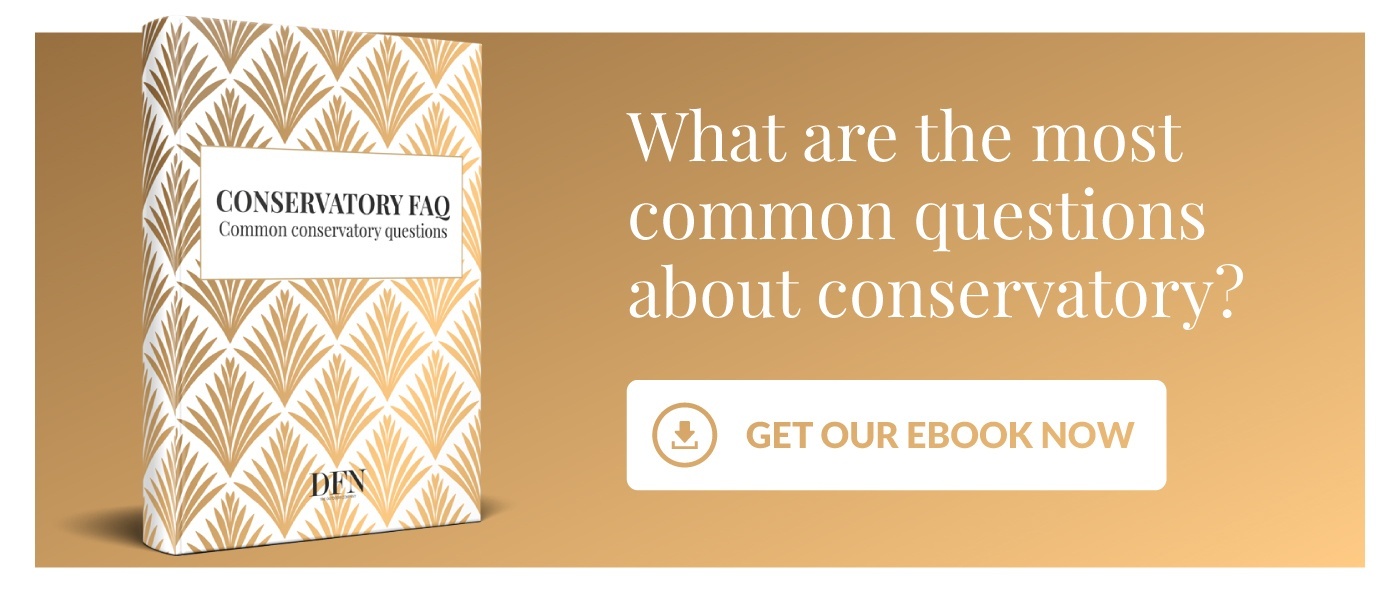A real work of art: a conservatory is a structure with an unmistakable design, extraordinarily current despite being conceived, in the form we know it, in the nineteenth century. This construction is very light and at the same time majestic, albeit imposing, and is made of glass with a very delicate appearance, enriched by details and coverings in materials that give a clear idea of luxury.
Designing a beautiful and elegant conservatory is not enough; you need to be able to make it an integral part of the surrounding landscape.
Let's take a look at how to create modern conservatories that fit into their environment effortlessly and organically, focusing on the basic structure, furnishings, and colors.
Conservatory: a room in nature
A fascinating feature of conservatories is their ability to communicate with their external environment.
This is possible thanks to their main construction material, glass, which allows the eye to penetrate the surfaces and sweep between the interior and exterior of the building, recognizing the space as only one, without distinction between the natural environment and the conservatory room.
To complete the work, you will only have to choose the most suitable design among the modern types of conservatories and focus on the materials for the details, coverings, decorations, and furnishings.
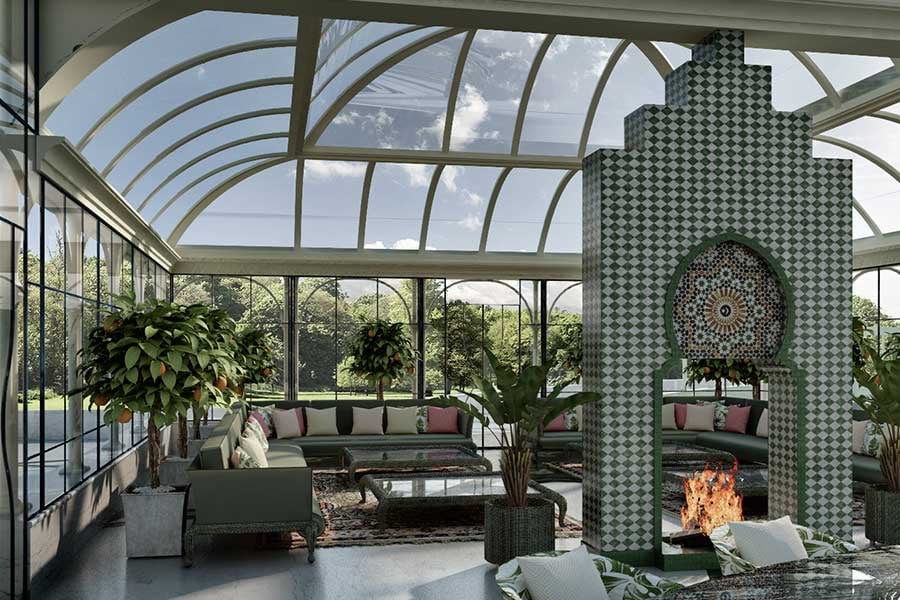
Types of conservatories: choose the perfect one for the client and the building site
First of all, analyze the area and the external environment where your conservatory will go.
Are there any other structures nearby? What is the surrounding greenery like?
Depending on the circumstances, you will be able to choose between different types of conservatories.
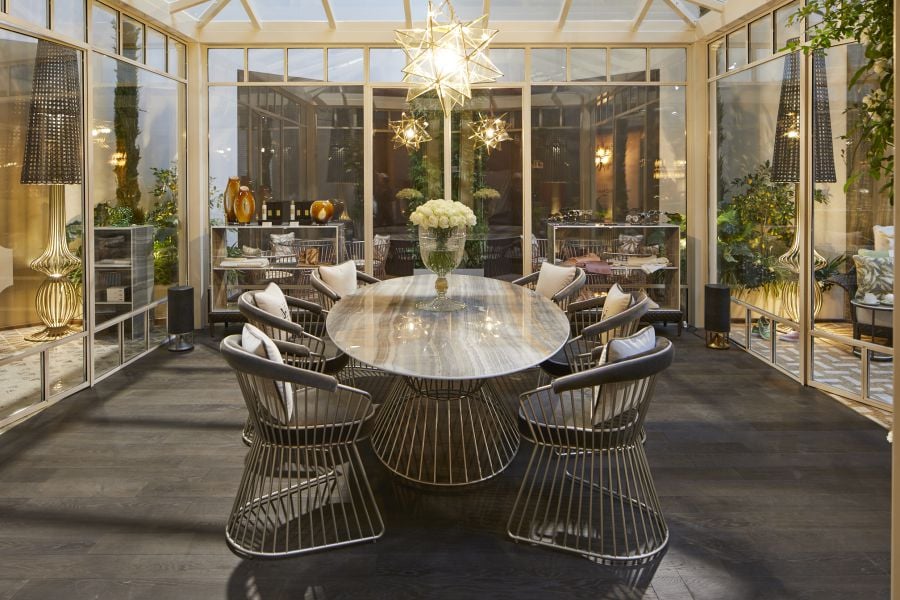
Victorian conservatory
The most common and popular victorian conservatories are very spacious and are characterized by a pitched roof and three to five facets, which give this type of structure a rounded shape.
Edwardian conservatory
With a rectangular design, Edwardian Conservatories have a four-sided pitched roof, are airy and light, and have a classic and timeless appearance.
Gable conservatory
Again, with a basic rectangular design, gable conservatories are distinguished from the others by the roof, which develops into a triangular shape and rises to give a sense of additional height and lightness to the structure.
Orangery
These structures also have a rectangular design, but instead of being composed only of glass and steel, the orangeries in their original meaning were characterized by a base made of bricks. Today, this term is used to indicate, tout court, iron, and glass structures.
Lean-to conservatory
Also known as the Mediterranean conservatory or sunroom, it is the simplest structure.
With a rectangular design, these structures are a natural extension of the house to which they belong.
In fact, a lean-to conservatory is not independent, as it shares one of the two longest walls with the housing construction.
P, L, T, U-shaped conservatories
The concept for these conservatories is the same as that of lean-to conservatories, but the shape of the drawing is adapted to the house the structure is connected to and designed according to the customer's tastes as much as possible.
Lantern roof and tiled roof conservatories
With a basic structure that can change according to tastes and needs, these two conservatory room designs differ from the others because of the roof’s particularity.
A lantern roof conservatory will appear more luxurious and unique thanks to the installation of a lantern roof that stands out above the classic conservatory roof.
A conservatory with a tiled roof, on the other hand, will have a more familiar and domestic look, given by the blind roof covered with slate tiles or shingles, very different from the classic glass roofs of traditional conservatories.
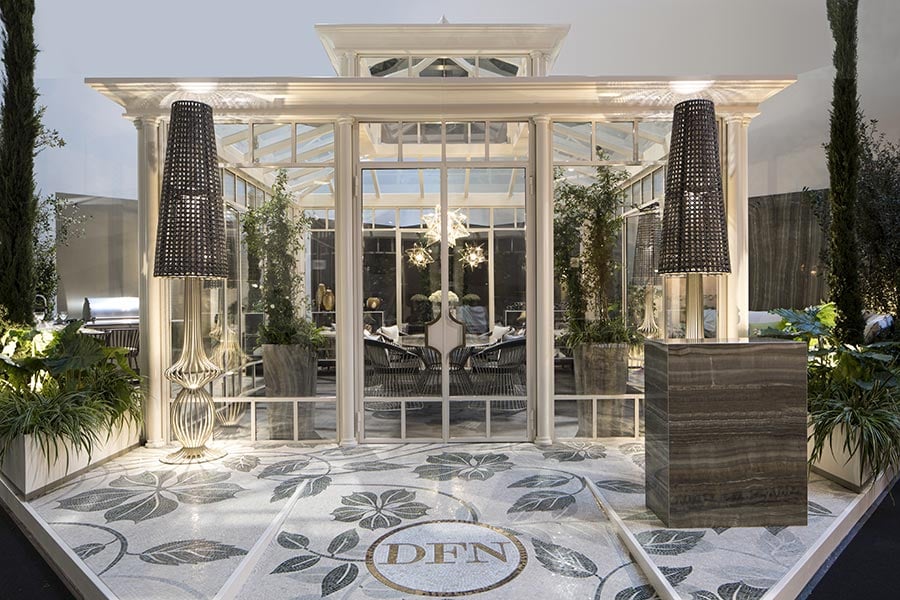
Designing a conservatory room: choose high-quality materials
While constructing your conservatory, always choose high-quality materials for all the constructive parts of the structure, including the walls, roof, coverings and finishes.
Selecting materials that will stand the test of time is a fundamental first step to ensure that all parts of your conservatory, from the structure to the furnishings, last over time without deterioration.
You will get a double benefit:
- Your conservatory will remain beautiful over time, adding value to the environment.
- The space will remain functional for a long time, and this will make the structure in all respects an integral and functional part of the landscape.
Rely on the most experienced manufacturing companies on the market, and choose the most suitable materials for your conservatory's geographical area.
For example, if the property is located in a particularly sunny and hot area, or cold or very cold, pay particular attention to the glass you use, as well as the materials and textiles you choose for the furniture and furnishings such as curtains and carpets.
Make sure that the material itself responds well to high (or low) temperatures, that any dyes used are resistant to sunlight and UV light without fading, and that products made with it are not subject to structural weakening when subjected to extreme temperatures or in the event of strong temperature fluctuations.
When it comes to choosing glass, don't rely on its appearance alone.
Select high-performance glass that helps you maintain the ideal temperature inside the structure, no matter the temperature outside.
Considering the large glass surfaces, attention must be paid to the selection of materials for furnishings, textiles, and covers, as they will certainly be exposed to sunlight.
Let's look at some materials worth considering.
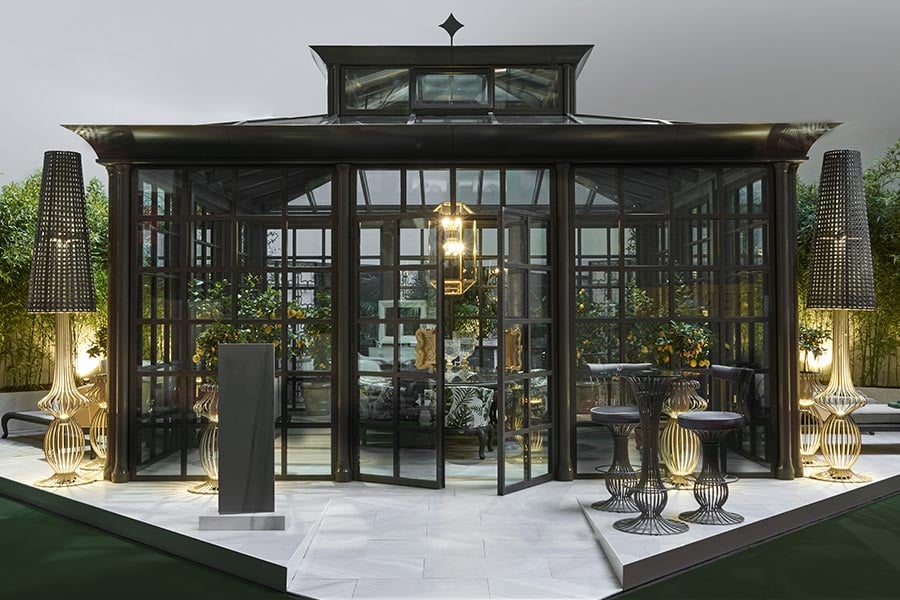
Synthetic rattan
With an appearance faithful to the vegetable fiber that inspired it, this option is excellent for decorating a conservatory’s interior spaces and the outdoors. With this type of material, you can freely move the furniture from the indoors to the outdoors.
Also excellent if your conservatory has a roof that can be opened, synthetic rattan is an eco-friendly, washable, and very durable material, resistant to atmospheric agents and UV rays, and non-fading.
Upholstery fabrics
To refine spaces and your furnishing elements, always choose upholstery fabrics resistant to sunlight and UV rays.
Select solution-dyed acrylic or solution-dyed olefin.
These fabrics are dyed in the spinning phase and not after the product has been made. For this reason, they are able to maintain their color and the general quality standards of the material for longer.
Comparable to the highest quality polyester for lightness and texture, these two fabrics however, have far superior technical characteristics, guaranteeing maximum resistance even if continuously exposed to intense sunlight.
Solution-dyed acrylic and solution-dyed olefin fabrics can be used for the upholstery of upholstered armchairs, poufs, and curtains and are also suitable for the creation of coverings, awnings, and umbrellas.
Natural marble
Resistant, very elegant, and luxurious, natural marble is perfect for the décor of modern conservatories. And thanks to the semi-reflective surface and the many organic patterns and colors you can find it in, it will integrate perfectly with the nature that surrounds it.
To maintain it, it is important to avoid the use of chemicals and products.
Use it for floors and tops of important tables.
Ceramics
Easy to maintain and care for, ceramic coatings are perfect and require little attention.
This material is excellent for floors, but in its marble finishes, it is also used for tabletops as it does not absorb liquids, does not change color in the light, and is very resistant. The range of finishes available today faithfully reproduces precious marbles and onyxes with the practicality of ceramics.
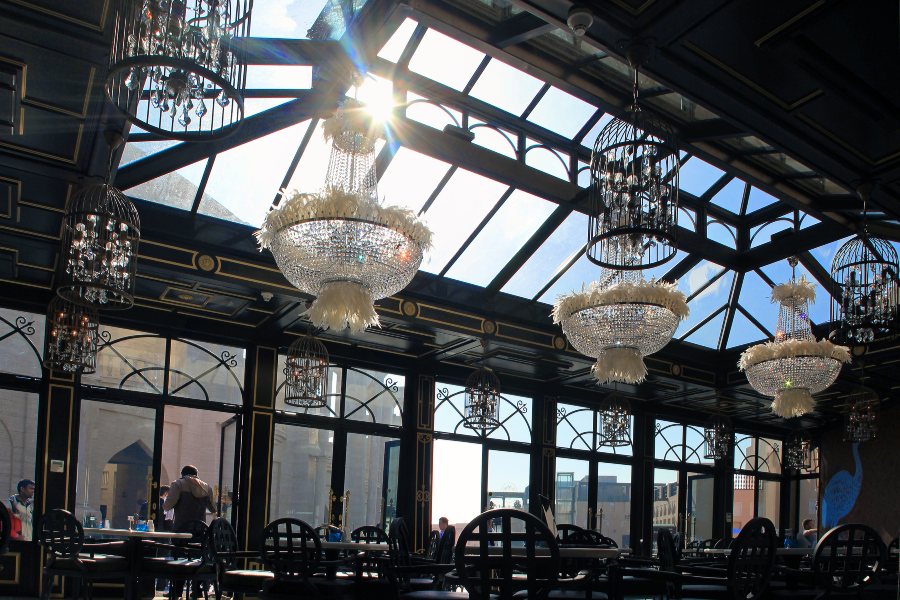
Colour palette for modern conservatories
From the paint you want to use for the details of the walls and/or the brick pillars to the colors for the furniture: the choice of the color scheme for your conservatory depends on you, the client’s tastes, their preferences, and their style, and the mood you want to characterize the space.
To integrate the structure with the surrounding environment organically, however, the advice is to use a neutral color palette in line with the colors of nature.
Green light to beige, cream, sand, khaki, brown, to the shades of green, pale blue, and powder shades.
This doesn't mean that you won't be able to get close to more vibrant, fuller, and brighter colors.
Inspired by nature and the way it uses color: flowers dot the space and enliven it.
Similarly, choose a shade or two to include in your color scheme and use them as pops of color throughout your design.
Vases, frames, textile products such as cushions, blankets and curtains, armchairs, and poufs: use color as an accent to revive the space and create movement and volume, maintaining the precious and very elegant continuity between man-made and natural elements, which conservatories so effortlessly achieve.



